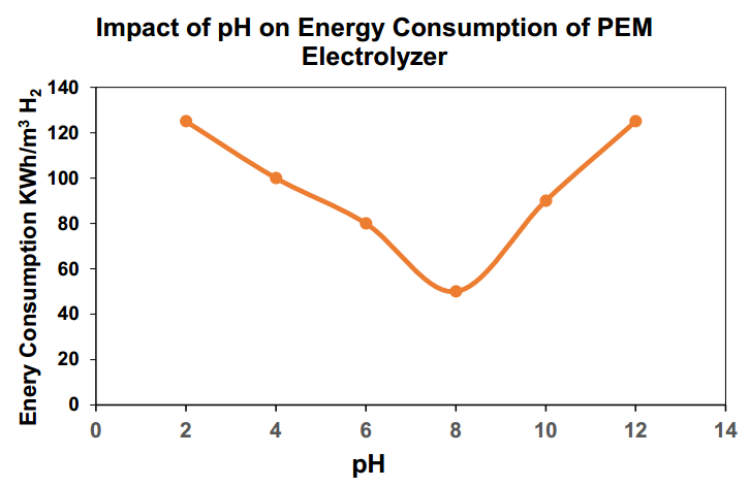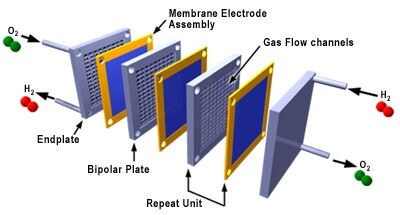Scalable Fabrication of Pt Composite Layers for PEM Water Electrolysis and Suppression of H2 Crossover
- 逸风 黄
- Sep 30
- 4 min read
Introduction
In PEM water electrolysis, hydrogen crossover through the membrane is a critical safety issue. To reduce hydrogen concentration and ensure efficient operation, a Pt-based hydrogen recombination layer is incorporated into the Membrane Electrode Assembly (MEA).
This study develops a scalable method to integrate a composite catalyst layer into the MEA. Using slot-die coating, an insulating resin layer followed by a Pt composite recombination layer (each 5 μm thick) is directly coated onto the anode. These three layers, along with the cathode and membrane, are transferred via a decal process to form a five-layer MEA. This structure effectively reduces hydrogen concentration on the anode side across different membrane thicknesses.
Compared to standard three-layer MEAs, the five-layer Nafion™ HP-MEA demonstrates higher long-term stability for the Pt layer. After prolonged operation, the anode-side hydrogen concentration remains below safety limits.
The technology successfully produced a five-layer MEA with an active area of 1056 cm² and a membrane thickness of 60 μm, showing high stability and uniformity. This indicates its suitability for large-scale production and application.

Methods
MEA Fabrication: Three-layer and five-layer MEAs were prepared using a decal transfer method with slot-die coating (200mm width). Catalyst dispersions were coated onto 140 μm PTFE substrate and dried at 80°C. The cathode catalyst was Pt/C (60 wt%, 0.25 mg/cm² Pt loading). The anode catalyst was IrO₂ (1.0 mg/cm² Ir loading).
For the five-layer MEA, two additional layers were coated onto the dried anode layer (Figure 2): a 5 μm thick insulating layer (15 wt% Nafion D2021 dispersion) and a 5 μm thick recombination catalyst layer (Pt/C, 60 wt%, Pt loading 0.04 mg/cm²). MEAs were fabricated using four different membranes: HP (20 μm), NR211 (25 μm), NR212 (51 μm), and N115 (127 μm).
Pilot-Scale Manufacturing: Scaling-up used a roll-to-pilot line with a 450 mm slot-die head (coating width 350 mm). A 17 m long coating process analogous to the lab-scale process was used to produce the three-layer anode structure. Electrodes were sampled across the coating's length and width for quality assessment. Large-area MEAs (32.5 x 32.5 cm² active area) were fabricated for testing.
Electrochemical Characterization: Tests were conducted in a single cell at 80°C. Anode H₂ concentration was measured using a thermal conductivity detector after gas separation. Polarization curves were recorded from 1.45 V to 1.80 V. A 240-hour durability test at 1.55 V was performed for HP-based MEAs.
Results and Discussion
Rheology: The flow curves of the anode (AL), recombination catalyst (RC), and insulating layer (IL) dispersions showed nearly Newtonian behavior with low viscosity. The cathode (CL) dispersion exhibited strong shear-thinning behavior, influencing coating parameter selection.
Layer Thickness: Cross-sectional analysis confirmed the insulating and Pt composite layers were each 5 ± 1 μm thick. The total thickness of the five-layer structure increased by 10 ± 2 μm compared to the three-layer MEA.
Polarization and H₂Crossover: The composite layer significantly reduced oxygen-in-hydrogen concentration for all membrane thicknesses (Figure 6). For thin membranes (HP, NR211), hydrogen crossover in three-layer MEAs reached 4-6% at low current densities, posing a safety risk. The five-layer structure reduced this by 10-20 times to below 0.3-0.4%. For thicker membranes (NR212, N115), where crossover was lower, the recombination layer still effectively reduced H₂ concentration by approximately tenfold.
Durability: During the 240-hour test at 1.55 V (Figure 7), the five-layer HP-MEA maintained a stable current density (~1.0 A/cm²). The hydrogen concentration remained low (0.11% ± 0.04%), an 8-fold reduction compared to the three-layer MEA (0.85% ± 0.04%). The recombination catalyst layer showed no signs of performance decay.
Post-durability polarization curves (Figure 9) confirmed the continued effectiveness of the composite layer across the current density range, even where performance slightly decreased, likely due to increased mass transport resistance.
Pilot-Scale Quality: Evaluation of 12 MEAs sampled from across the 350 mm width and 17 m length of the pilot-scale coating showed excellent uniformity (Figure 10). The HFR values were consistent (61.9 ± 1.5 mΩ cm²), and the iR-free polarization curves showed minimal deviation (±5 mV at 3 A/cm²), demonstrating homogeneous coating quality. Hydrogen crossover was effectively suppressed across all samples.
Conclusion
This study presents an economical and scalable method for integrating a Pt recombination layer into PEM electrolyzer MEAs.
The precise transfer of a 5 μm insulating Nafion layer and a Pt composite layer onto the anode is crucial. The resulting five-layer MEA reduces hydrogen crossover by up to 20 times compared to standard three-layer MEAs across the operational current density range.
The composite layer demonstrated excellent long-term stability over 240 hours at 1.55 V, maintaining an 8-fold reduction in hydrogen permeation without significant performance loss. It remains effective even at high current densities where hydrogen generation and crossover rates are high.
The slot-die coating and decal transfer process enables the fabrication of large-area, uniform MEAs. Pilot-scale production confirmed consistent coating quality and recombination layer effectiveness over a 35 cm width and 17 m length, proving its suitability for industrial manufacturing. This approach allows the use of thin membranes without compromising safety.
Future work should focus on the layer's performance under elevated pressure conditions and strategies to reduce the precious metal content in the recombination layer to lower costs.







Comments